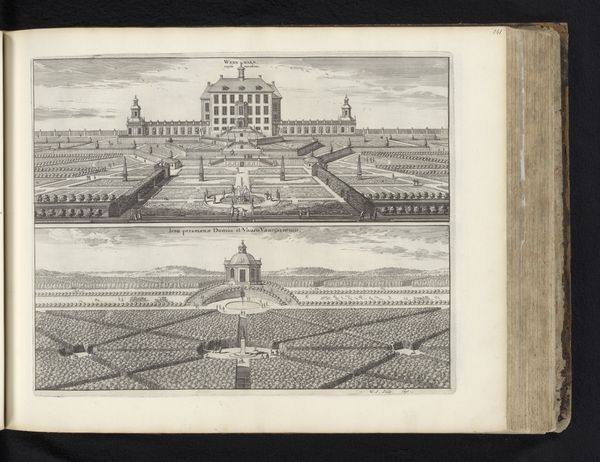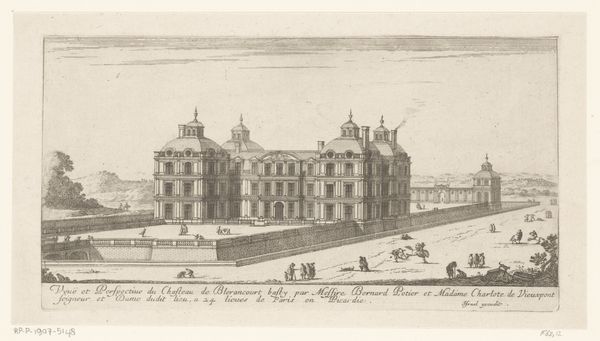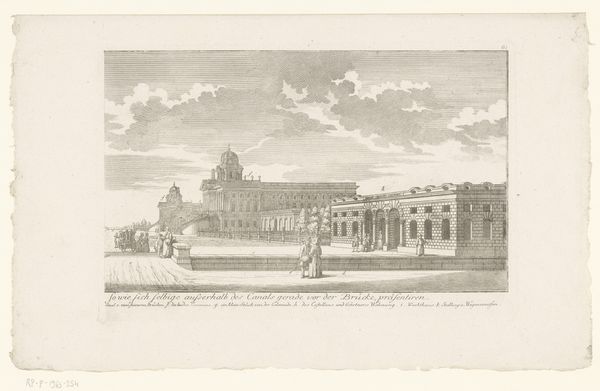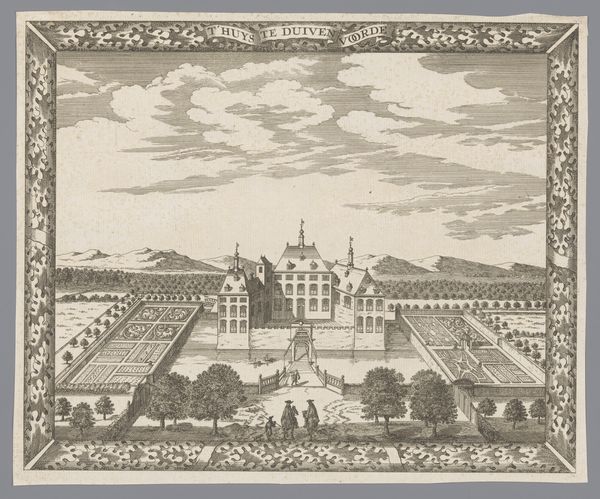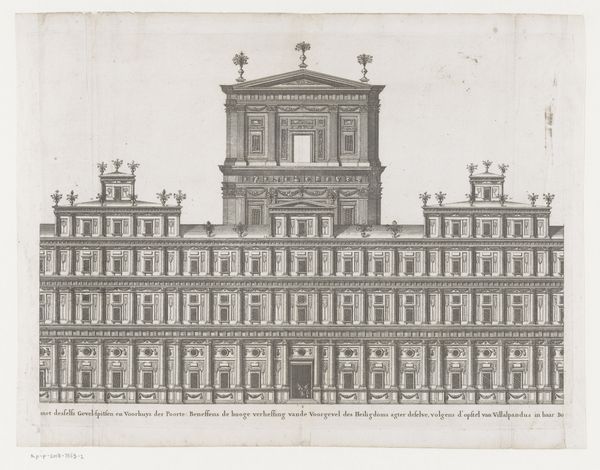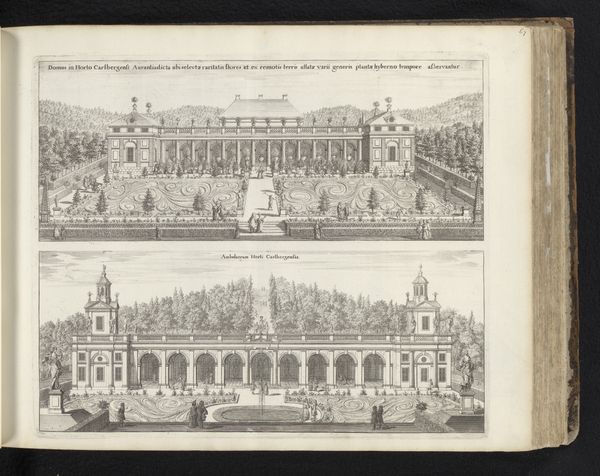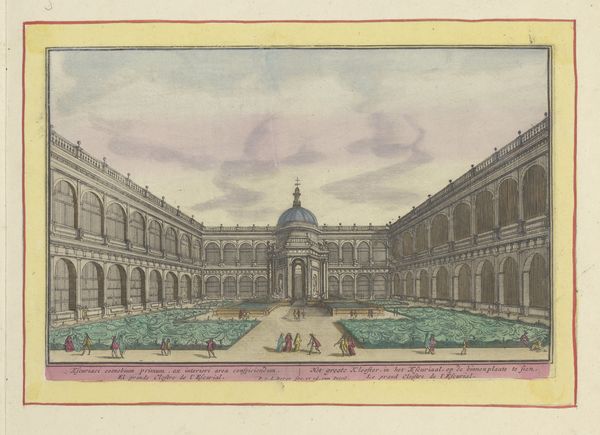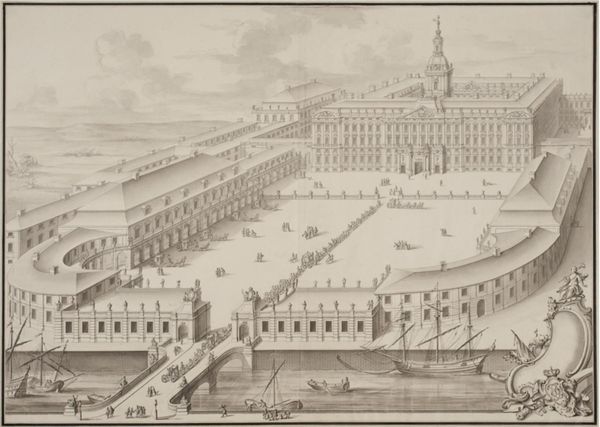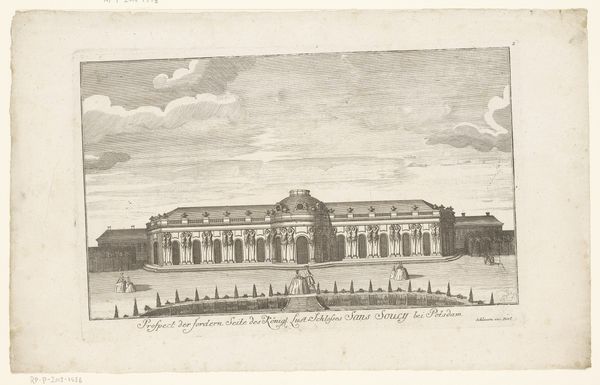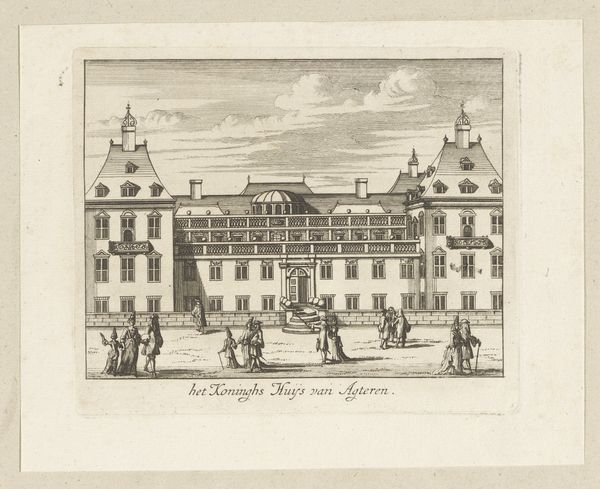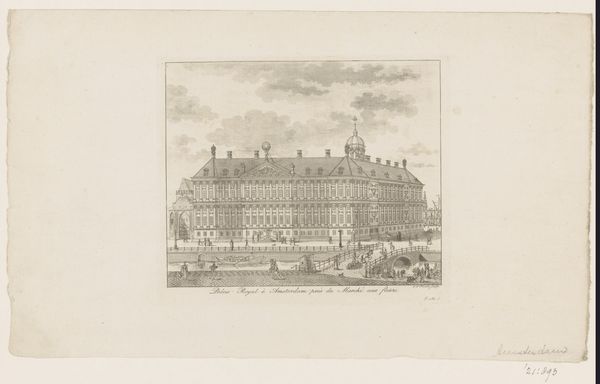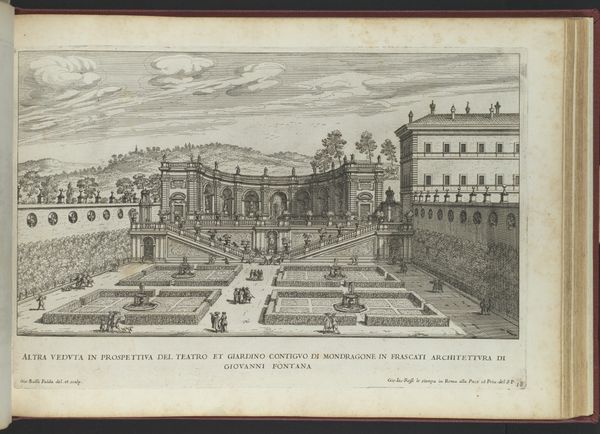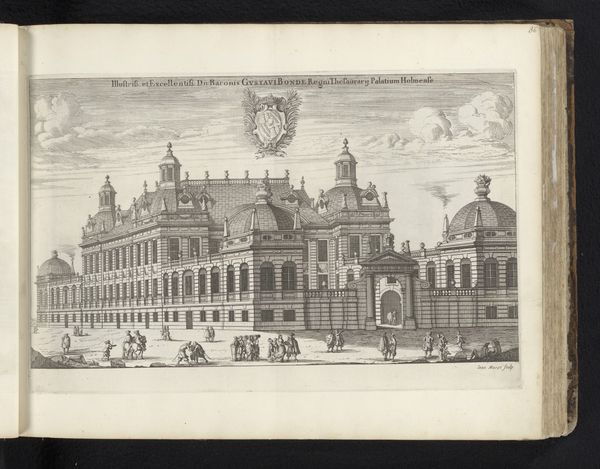
print, engraving, architecture
#
neoclacissism
# print
#
old engraving style
#
landscape
#
geometric
#
cityscape
#
engraving
#
architecture
Dimensions: height 209 mm, width 325 mm
Copyright: Rijks Museum: Open Domain
Curator: Well, here we have an engraving from the mid to late 18th century titled "Gezicht op het Potsdamer Stadtschloss," which translates to "View of the Potsdam City Palace." It's part of the Rijksmuseum collection, though we don’t know who exactly created it. Editor: The very first thing I notice is its architectural geometry, it's fascinatingly rigid and ordered. There's something almost dreamlike in the precision. A meticulously crafted monument in monochrome. Curator: Absolutely. It's a classic example of Neoclassicism, the period’s fascination with symmetry and order is completely present in this work. Look at how the palace dominates the landscape. Each element of the cityscape reinforces that sense of carefully controlled grandeur. Editor: And that perfectly manicured open space…it really does feel controlled. Do you think that’s a reflection of power, creating this ideal of absolute control and flawless form, and, conversely, supressing anything perceived as wild or disordered? Curator: Perhaps. Cities, and their representation, have often been statements of authority, certainly. The print medium also played a part; It makes the architectural vision more easily distributable and reinforced those statements widely. Editor: And speaking of dissemination, the architectural symbols in the Potsdam palace are worth thinking about. Notice how the central dome echoes older structures, the Roman Pantheon or St Peter's Basilica, connecting itself to that legacy. Curator: That’s a really interesting connection to cultural memory. This deliberate borrowing reinforces the legitimacy and timelessness of the ruling powers who commissioned the construction. Editor: I wonder if, at the time, people even saw it consciously. Because these associations run so deep, becoming naturalized. Maybe they evoked that feeling of rightfulness and control we discussed. It's almost an emotional, persuasive symbol, even today. Curator: Indeed. It's fascinating how even a seemingly objective architectural rendering becomes layered with these cultural and historical meanings. Editor: Agreed. It really prompts us to look beyond the image, beyond the stones and engravings, and think about what it represents. It is much more than a view; it is a reflection of our collective dreams and aspirations for a structured, perhaps even utopian, future.
Comments
No comments
Be the first to comment and join the conversation on the ultimate creative platform.
